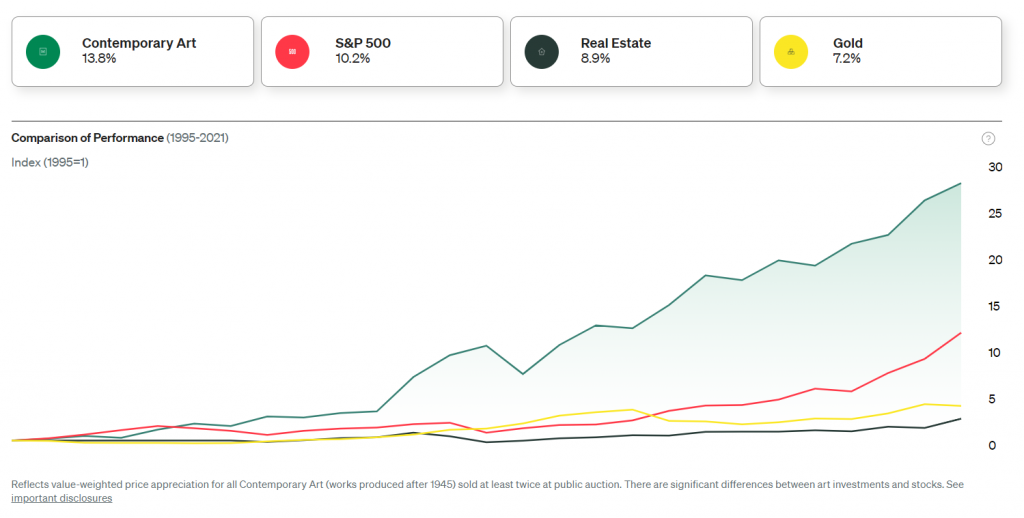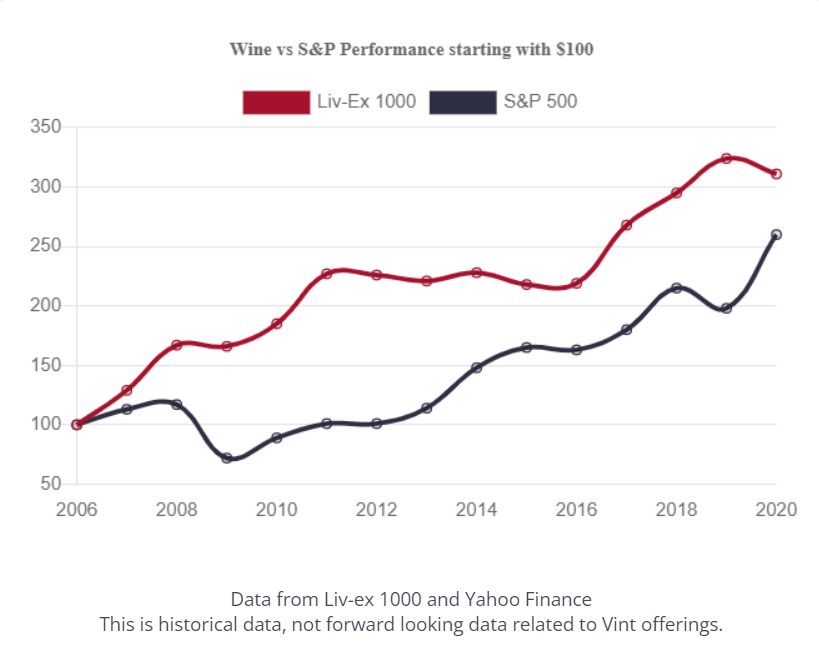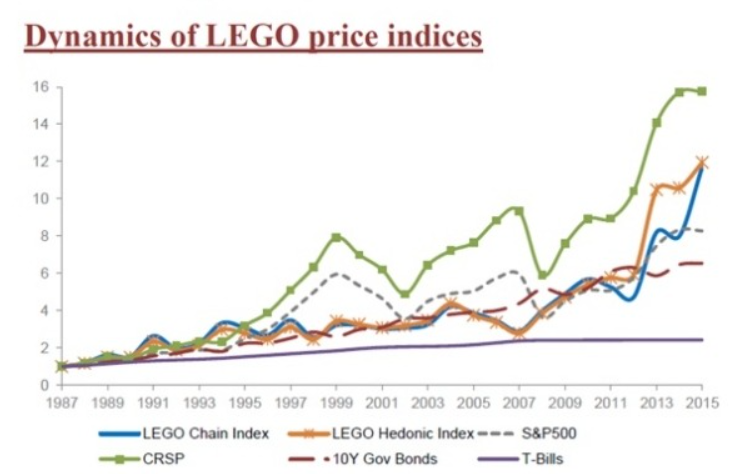Why investors turn to collectible investments
Before diving into some of the most popular collectible investments, it's important to understand why someone might want these assets in their portfolio in the first place:
- Passion projects: For many investors, dabbling in collectibles begins as a passion project that's mixed with the desire to invest. For example, someone who invests in rare Pokemon cards or baseball cards probably has an affinity to either one, or at least enjoys researching the space.
- Portfolio diversification: Another reason to invest in collectibles is to diversify your portfolio. Collectibles are as far removed from securities like stocks, bonds, and ETFs as you can get, and some investors view them as excellent stores of value or appreciating assets.
- Inflation hedging: Some investors argue that investments like artwork, wine, and gold and silver can serve as excellent inflation hedges. Historically, assets like gold have been, which is why more investors have been turning to alternatives as markets dip and the dollar loses value.
- Outperforming the market: Collectible investments are often high-risk, high-reward. For example, if you invest in a classic car, it doesn't usually generate income, and it's difficult to know if it will appreciate. But if you enter at the right price and things go your way, there's the potential to outperform the market, and by quite a margin.
- Enjoyment factor: A piece of artwork can bring someone genuine pleasure. Same goes for an iconic action figurine, or an old comic book. In contrast, the stocks and ETFs in your online broker don't have the same “enjoyment factor” as collectibles,
Meet Your Retirement Goals Effortlessly
The road to retirement may seem long, but with WiserAdvisor, you can find a trusted partner to guide you every step of the way
WiserAdvisor matches you with vetted financial advisors that offer personalized advice to help you to make the right choices, invest wisely, and secure the retirement you've always dreamed of. Start planning early, and get your retirement mapped out today.
Get StartedThe most popular collectible investments
If you want to shake up your portfolio away from regular securities, the following collectible investments might be up your alley.
1. Artwork
People have been creating and collecting artwork for thousands of years. So, it's no surprise that it's one of the most popular alternative assets out there.
But artwork isn't just an investment that can help beautify your home. According to artwork investing platforms like Masterworks, it has the potential to outperform the market and also provide some downside protection at the same time. Just take a look at Masterworks‘ data on how contemporary artwork has performed against the S&P 500, real estate, and gold:

That said, artwork investing isn't without downsides. For one, it doesn't generate income, so you have to rely on appreciation and an eventual sale to get your return.
Artwork investing platforms like Masterworks somewhat reduce these risks since they has a shorter target holding period and a secondary marketplace for shares. But know that this collectible investment is still generally illiquid; a common theme for this style of investing.
2. Trading cards
In 2022, a PSA 10 Gem Mint grading Shadowless 1st Edition Holo Charizard Pokemon card sold for an astonishing $420,000. And if you don't know what all that jargon means, don't worry. In simpler terms, someone just paid the equivalent of a nice house for a child's collectible playing card.
Investing in trading cards isn't anything new, and people have been buying and selling trading and sports cards for decades at this point. But in recent years, there's been a surge in certain trading card niches like Pokemon. This rise in interest has been largely fueled by people picking up new hobbies during the pandemic and card collecting becoming more mainstream with celebrities getting involved.

Logan Paul with his $5.2+ million dollar Pokemon card. Image courtesy of Guinness World Records.
This sort of sudden interest presents a lot of opportunity for flippers and collectible investors to turn a profit. It's almost similar to crypto in some regards since when a lot of new money piles into an industry, the early adopters can usually cash out on the wave of popularity.
Personally, I wouldn't dabble in trading card investing unless you're very familiar with a particular trading card game or sport and know how to spot a deal. But if you just want to dabble in this collectible investment, you can use platforms like Collectable to buy fractional shares of rare sports cards and other sought-after merchandise.
3. Wine
Like artwork, wine is another collectible investment that can help diversify your portfolio. Wine also helps provide downside protection since wine prices don't usually correlate too strongly to the market. And the great news is that you don't need a million-dollar wine cellar to add wine to your portfolio.
Platforms like Vint and Vinovest let you invest in fine wine from around the world starting with $25 and $1,000 respectively. With Vint, you buy shares of wine collections, and you don't need to be an accredited investor or even know much about wine to get started. As for Vinovest, it's similar to a robo-advisor and provides automated wine investing for a variety of portfolios.
Both Vint and Vinovest handle storage and wine insurance as well, so it's a passive investment. And according to Vint and Liv-ex 1000 data, wine has outperformed the S&P 500 since 2006.

Like many other collectible investments, a lack of income generation is one downside of wine investing. Ironically, liquidity is as well, and you can't usually sell off your wine portfolio in a single day like you can with stocks. However, as platforms like Vint and Vinovest pop up, the barriers to entry for wine investing are only getting smaller.
4. Comic books
Like trading cards, certain comic book series and characters have incredibly loyal fans. This can make old, rare comic books immensely valuable in the eyes of collectors. By investing in comic books and holding them for the long-run, you're banking on this interest to continue and for your books to appreciate.
That's the theory behind comic book investing anyways, although for some investors, owning a 1977 Star Wars #1 comic book that's in pristine condition might just be for pure nostalgia.
In any case, if you want to invest in comic books, platforms like Rally Rd. let you buy shares of rare comic books starting at just $1 per share. This means you can be a part-owner of comics like a 1940 Batman #1, or a 1963 X-Men #1, without having to spend upwards of hundreds of thousands of dollars for the entire book.
5. Classic cars
Classic cars are another popular collectible investment, and they're actually an asset with utility unlike many collectibles. But whether you drive your classic car around town on a sunny day or keep it locked up in a showroom is entirely up to you.
Once again, platforms like Rally Rd. let you invest in shares of classic cars like a 1955 Porsche 365 Speedster or an Aston Martin V8 Vantage Oscar India. This is ideal if you're investing a small amount of money or don't want to spend enough to own a classic car outright.
However, according to a July 2022 report from Hagerty, inflation is now outpacing classic car appreciation. Hagerty tracks data like auction volume for classic cars, and this news isn't ideal if you're a serious motorhead who was hoping to beat inflation by investing in cars.
6. Historical artifacts & antiques
Growing up, I watched a lot of the History Channel show Pawn Stars. If you haven't seen it before, it follows a famous Las Vegas family-run pawn shop and the antics that ensue each day. As the viewer, you get to watch people attempt to pawn or sell all sorts of collectibles, ranging from ancient coin collections to famous artwork.
The category of historical artifacts is probably the most popular on the entire show; pretty much every episode features some sort of old, collectible antique. This includes artifacts from ancient Egypt to the Second World War, and everything in between.
As an investment, antiques and historical artifacts are too niche to really generalize. For example, the market for investing in ancient coins is probably very different from the market for antique U.S. firearms. But for any antique or historical artifact, spotting frauds and authenticating your potential investment is incredibly important.
7. Figurines & toys
In a 2022 study published in the journal of Research in International Business and Finance, researchers argued that Lego actually outperforms large stocks, bonds, and gold. The researchers analyzed secondary marketplace prices for Lego with a sample time period of 1987 to 2015 and found that the average return is about 11% annually.

This makes some sense if you think about it. After all, Lego is an old company, so sets produced a decade or two ago might fetch much higher prices for nostalgic investors than the original MSRP. Other toys, including Funko Pops and action figures, can follow similar patterns.
Of course, this doesn't mean you should liquidate your portfolio and go all-in on Lego as a collectible investment. And the 2022 study is also a bit unfair. Yes, Lego sets appreciate, but is it easier to invest $10,000 in gold bars or $10,000 in Lego sets that actually stand to appreciate? My guess would be the former.
However, if you're very knowledgeable and passionate about a certain franchise or period of time, you might find toy investing brings both a sweet sense of nostalgia and the potential for returns.
8. Sneakers
One final collectible investment that's very popular is sneaker investing. Sneakerheads, which is the term for sneaker collectors and investors, generally buy rare, mint condition sneakers and then flip them for a profit or hold onto them with the hopes of appreciation.
What's interesting about sneakers as a collectible investment is that there's overlap between investors and everyday consumers who just want the latest pair of Jordans to walk around in. This is why some sneakerheads try to buy sneakers that are part of an exclusive drop, and then immediately flip them. This could involve buying limited edition Nikes, Jordans, and other luxury sneaker brands.
Overall, sneaker investing is a mix of a flipping side hustle and collectible investing. But if you want to dabble in collectibles that are potentially faster to liquidate, sneakers could be for you.
Advantages and disadvantages of investing in collectibles
Pros
- Collectible investments can help diversify your portfolio
- Fractional investing has made it easier to get started without much capital
- Some collectibles provide downside protection and can even be inflation hedges
- Potential for outsized returns
Cons
- Collectible investments don't usually produce fixed-income
- Most collectible investments are illiquid
- Fraudulent collectibles pose a serious risk to investors
- The barrier to entry can be high for some collectibles
- Generally, successful investing in collectibles requires a lot of knowledge and research, so it's less passive than you might think
Stop overpaying for home insurance
Home insurance is an essential expense – one that can often be pricey. You can lower your monthly recurring expenses by finding a more economical alternative for home insurance.
SmartFinancial can help you do just that. SmartFinancial’s online marketplace of vetted home insurance providers allows you to quickly shop around for rates from the country’s top insurance companies, and ensure you’re paying the lowest price possible for your home insurance.
Explore better ratesDo collectibles belong in your portfolio?
When it comes to alternative investments like collectibles, there's no cookie-cutter answer for deciding if they belong in your portfolio.
Many investors stick with a rough five to 10% rule for alternatives in their overall portfolio. This can include commodities, collectibles, and crypto. For others, collectibles are simply too speculative and have no place in a portfolio. And for the more extreme, alternatives are the foundation of their investing strategy.
Personally, I think focusing on growth stocks, ETFs, and dividend stocks makes more sense, especially for younger investors who have compound interest on their side. And alternatives like real estate can also help you diversify your portfolio while generating income.
However, if you want to explore an entirely new type of asset and don't mind the risks, collectibles could be for you. Just make sure you do your research, know the risks, and never invest money you can't afford to lose.
Related reading:
- The best alternative investment platforms.
- Yieldstreet review – Invest In alternative asset portfolios.
Sponsored
Follow These Steps if you Want to Retire Early
Secure your financial future with a tailored plan to maximize investments, navigate taxes, and retire comfortably.
Zoe Financial is an online platform that can match you with a network of vetted fiduciary advisors who are evaluated based on their credentials, education, experience, and pricing. The best part? - there is no fee to find an advisor.











